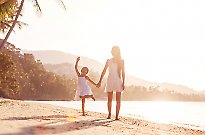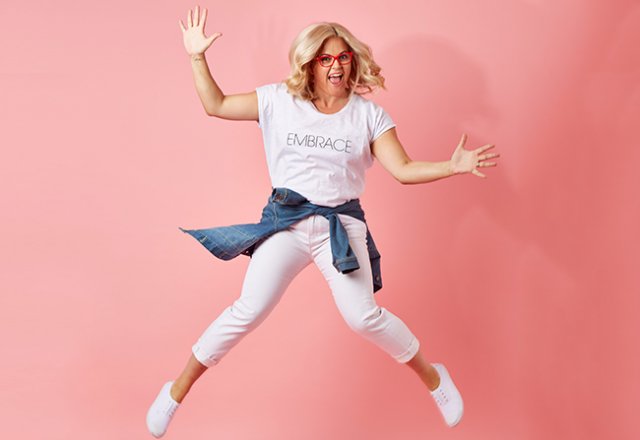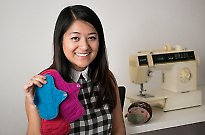We chat with Brumfitt about the making of the documentary, the key lessons she’s learnt along the way, and what she hopes to teach her daughter about learning to love her body.
When and why did you start the Body Image Movement?
I started the Body Image Movement in 2013 with the aim of spreading the message of body positivity and acceptance. I think it’s important for women to know that there is not just one type of healthy body, and that everyone has the right to feel good about themselves, regardless of how they look.
What inspired you to make your documentary, Embrace? Who did you make the film for?
After I posted the before-and-after photo, I received more than 7,000 emails from people all over the world who were struggling with body image or who were worried for their loved ones. I made Embrace for all the people in the world who have struggled with body image, but throughout the whole process, I had my young daughter in mind. I want to make sure that she grows up in a world where she is not judged on the shape or size of her body.
How did you generate the funds to make the film?
Embrace’s initial funds were raised via a Kickstarter campaign in 2014. I made a trailer for the Kickstarter campaign with a goal of raising $200,000 and by the end of the campaign we had received over $330,000 from 8,909 people. The response was completely overwhelming. I knew this was an important issue but the support I received during that time from people all over the world, including Ricki Lake, Zooey Deschanel and Ashton Kutcher, motivated me even further to spread Embrace’s message.
During the filming, you spoke to hundreds of women about their body image. What was the most telling aspect of their answers? Were there any similarities?
Speaking to women all over the world about their body, one of the most common words I’ve encountered is ‘disgusting’. So many women truly believe that they look disgusting and this trickles down into the minds of young girls as well. The researchers of Embrace found that 50 per cent of five- to 12-year-olds want to lose weight.
What has been the most rewarding part of making the film?
The most rewarding part of making the film has been seeing the difference that it can truly make in people’s lives. One woman wrote to me last week saying that she had hosted a screening of the film and brought along her teenage daughter and friends. She asked them to rate their body image from 1 to 10 before watching the film. All gave very low answers and one girl rated herself a 1. After watching Embrace, they all rated themselves much higher and the girl that wrote a 1 now said she felt a 7. It’s that kind of tangible change that proves the power of this message and motivates me to spread it even further.
Earlier this year, the film received an MA 15+ rating. How did the classification affect your efforts as both a positive body image activist and a filmmaker?
Embrace was given an MA 15+ rating because of the inclusion of what the review board called “protruding labia”. I felt that it was important to show the diverse range of ways that women’s vulvas come in because of the staggering increase in labiaplasty in women and young girls in recent years. When I found out that this was the reason for the rating, I felt frustrated and angry. It’s so important for girls under the age of 15 to see this film and a classification of MA 15+ meant that a lot of them would be discouraged from seeing it.
I rallied on social media to get the trailer seen and had a staggering response where over 200,000 people shared the trailer and it was watched more than 20 million times.
The film was recently declassified on appeal. How do you feel about that?
I am thrilled that the right decision has been made. With rates of labiaplasty on the rise, particularly in teens, I knew how important it was to include the educational and informative vulva section in the film. Since the film’s release, I have been told every day that it must be seen in schools and now it can be. The Classification Board’s decision means that Embrace can be more accessible to the people who need its message the most.
What message would you like to share with young girls about learning to embrace their bodies?
Embrace your body; it’s the only one you’ve got. Your body is not an ornament; it’s the vehicle to your dreams.
What do you believe makes up a woman’s true beauty?
You actually cannot see beauty. Beauty is humility, kindness, compassion – all the things you cannot see.




